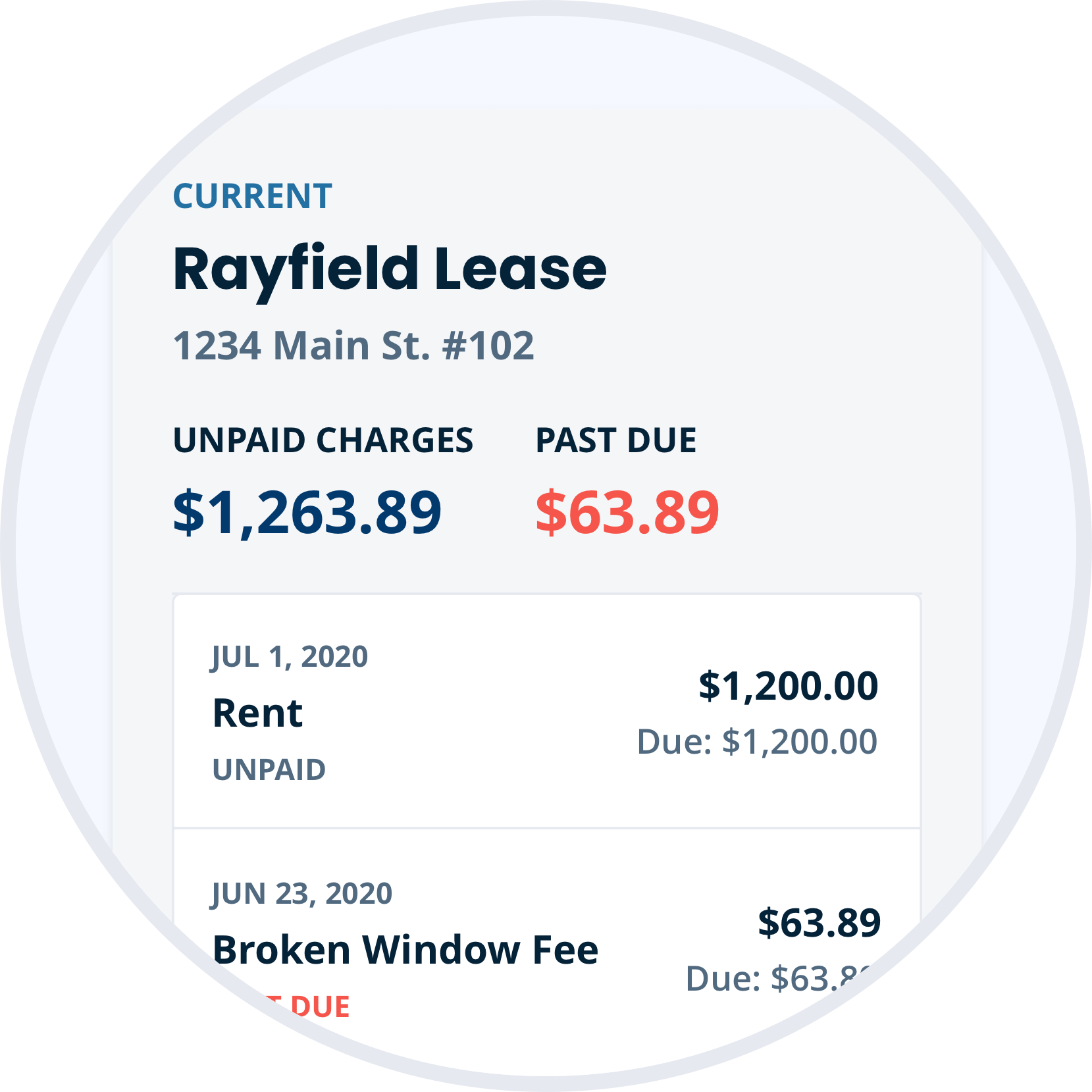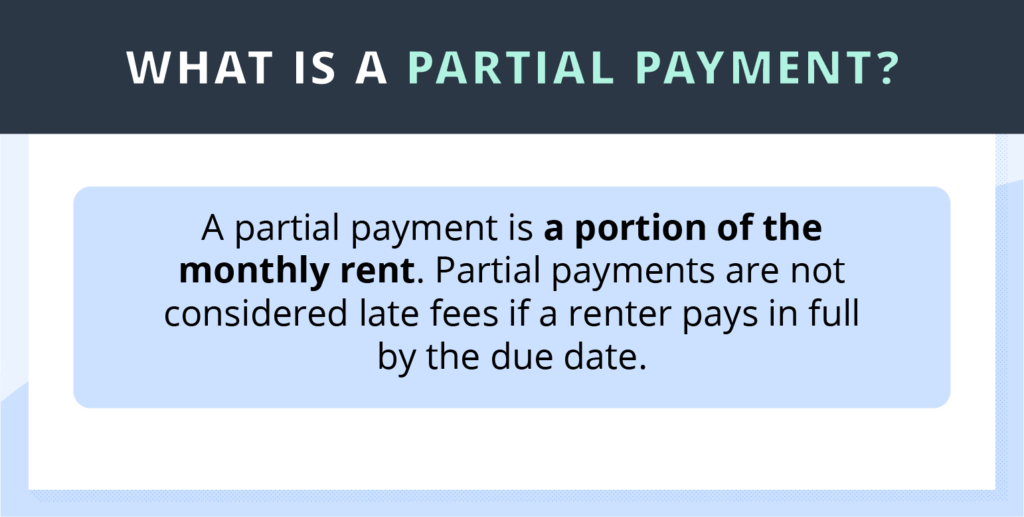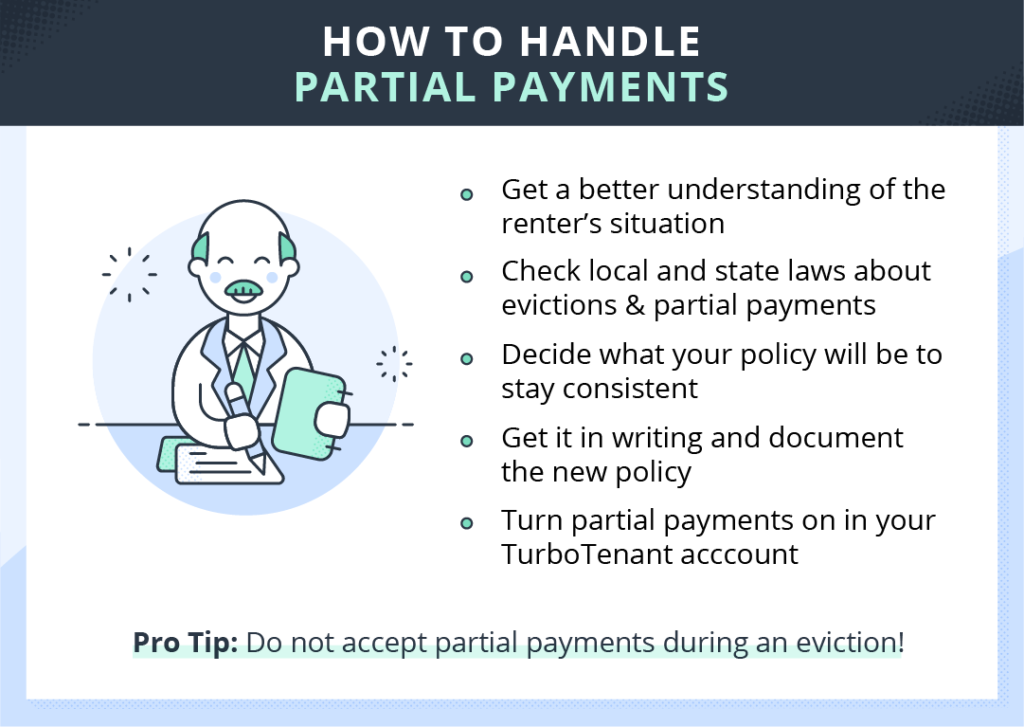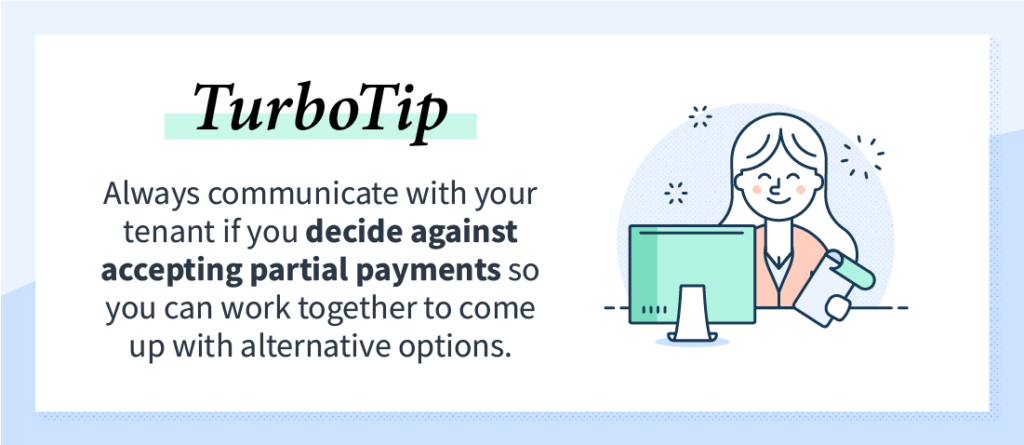Accepting partial payments is never an ideal situation for a landlord. However, changing circumstances with the economy, a renter’s job or health, and other things out of your control might lead some landlords to consider accepting partial rent payments from tenants. During the pandemic, the number of landlords accepting partial payments has increased due to the financial hardship across the country as well as eviction moratoriums.
It’s important to understand how you can accept partial payments safely to protect your business and rentals while also providing flexibility for your tenants. Below we will guide you through what partial payments are, how to handle them, and, also, what to do if you decide against them.

Collect Rent Online → Report Rent for Free
Now, not only do landlords enjoy the convenience of collecting rent online, but by doing so, your tenants can build credit by reporting rent payments to TransUnion for free. Learn more about Rent Payments & Rent Reporting.
What are Partial Rent Payments

Partial payments are just what they sound like – a payment that is only a portion of the monthly rent. Partial payments are not considered late if your renters pays in full by the due date. For example, if rent is due on the 30th of every month, if tenants pay half of the rent earlier in the month and then the next half by the end of the month, this could alleviate financial stress for them while also allowing landlords to continue to receive a monthly cash flow. Another example of using partial payments is if you have a lease with multiple tenants – instead of one renter being responsible for collecting money from everyone, each individual roommate can pay their portion of the rent as a partial payment.
If you accept rent payments online through TurboTenant, you have the option to turn on partial payments for the situations described above or for other reasons. Remember that even if you accept partial rent payments, your tenants will still owe the total rent amount by the due date specified in the lease – late fees should be enforced if the total rent amount is not paid in time. One great bonus of collecting rent online is automatic reminders for renters to pay unpaid charges to help them avoid late fees – online rent payments also enable you to see who has paid and which renter or roommate in a unit still owes rent.
One important note to keep in mind is to avoid accepting partial payments during an eviction – this could halt eviction proceedings and also waive your right to collect the rest of the rent due for that month.
How to Handle a Partial Rent Payment
If you do decide to accept partial rent payments for whatever reason, here are a few general guidelines to follow:
- Find out why they need it – while you don’t need to know every detail, it’s important you communicate with your tenant and try to understand their situation so you can be understanding and determine if you think it would be acceptable to start accepting partial payments.
- Check local and state laws regarding partial payments – because accepting partial payments might conflict with evictions, make sure you check your local and state laws so you are prepared.
- Decide your policy – you want to stay consistent with your partial payments policy especially if you have multiple units; outline situations where partial payments are allowed as well as how they can be implemented.
- Get it in writing – documenting your partial payment agreement is crucial to protecting your investment; create an addendum or an Agreement for Delayed or Partial Rent Payments that you both sign and that clearly outlines the terms to help avoid any conflict.
- Turn partial payments on in your TurboTenant account – the last step you have to take is enabling partial payments in your landlord account so tenants can easily go in and pay the partial payment amount. Read here for directions on how to turn them on.
Taking these steps will make sure you are protecting your rentals and property investment while also allowing your tenants to have more flexibility when cash is tight.
Deciding Not to Accept Partial Rent Payments
As a landlord and property investor the decision to allow partial payments is ultimately up to you. If you’ve communicated with your tenant, gone over your finances, and determined the pros and cons and decided not to accept them, continue to fall back on the lease terms the tenant originally agreed to. Because your lease states how much the rent is and when it’s due every month, you don’t need to include a separate clause regarding partial payments.
Communicating with your tenant is always a best practice – when they come to you asking for partial payments, it’s essential to be transparent and explain your policies that are in the lease agreement while reiterating the rent due date. If they are stuck in a financial bind, work with them to come up with possible alternatives such as:
- Paying rent with a credit card to offer flexibility
- A cash for keys agreement if they know they won’t be able to make rent
- Changing the rent due date to accommodate their paycheck schedule
Additionally, if a tenant does not pay rent on time, make sure you stick to your policies and charge a late fee – if they still send you a partial payment in the form of cash or check, do not accept it.
While accepting partial payments isn’t a typical practice for landlords, sometimes renters, even great ones who typically pay on time, might lose their job or find themselves with a large medical bill. As a landlord, communicating, being understanding, and then sticking to your partial payments policy will ensure you protect your property investment.
Partial Payment FAQ
How should I accept partial payments?
The easiest way to accept partial payments is through online rent payments. Accepting partial payments with cash and checks can become difficult and unorganized quickly – having all of the information on who has paid rent and who has paid partial payments through online rent payments will make it much easier to keep track of. Learn how to start accepting rent payments through TurboTenant here.
What is the downside of accepting partial rent payments?
The drawback of accepting partial rent payments is that by accepting only a portion of the rent, tenants might feel less obligated to pay the rest. It’s important to reemphasize to renters that they are still responsible for paying the full amount by the agreed upon date, even if it is split up.
What is the difference between partial payments and late rent?
Partial payments are payments that might be split up into two or more separate payments – however, rent should still be paid by the specified due date. Late rent is any rent that is owed past the due date – if a tenant has only paid one partial payment by the due date, this would be considered late rent.









